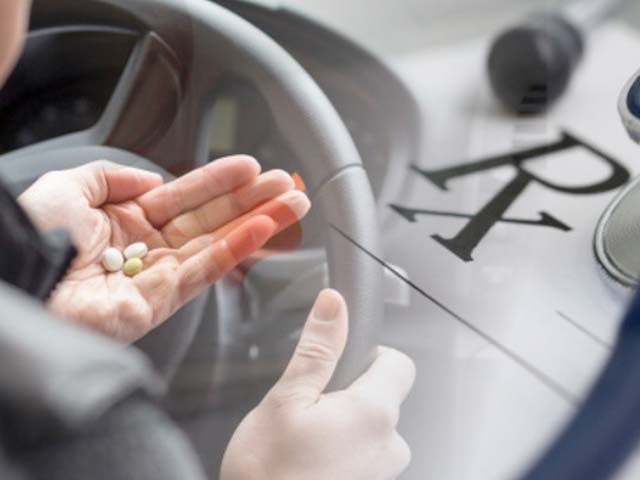When Do You Need a CDL? Rules & Requirements Breakdown
What Is a CDL?
A CDL is a commercial driver’s license and, like the driver’s license you might already have to operate a passenger vehicle, there are a number of rules, requirements, and regulations to follow in order to obtain and maintain one. Why is a CDL so important? As the Federal Motor Carrier Safety Administration explains, driving a commercial motor vehicle requires a higher level of knowledge, experience, skills and physical abilities than operating a passenger vehicle.
Applicants must pass specific tests that assess skills and knowledge, and CDL holders are held to a higher standard. Traffic violations, for example, may impact your ability to obtain and maintain certification. Drivers can obtain a CDL in their home state but it’s important to note that having multiple CDLs from different states is illegal.
Also, depending on the location and whether your drivers will be engaging in intrastate or interstate transportation, a valid Medical Examiner’s Certificate may be required with the CDL application.
Types of CDLs
There are three types of CDLs, as defined below by the Federal Motor Carrier Safety Administration (FMCSA):
- Class A: Any combination of vehicles with a GVWR or gross combination weight of 26,001 lbs. or more, including a towed unit(s) with a GVWR or gross vehicle weight of more than 10,000 lbs.
- Class B: Any single vehicle that has a GVWR or gross vehicle rate of 26,001 lbs. or more, or a vehicle towing a vehicle with a GVWR (or gross vehicle weight) that isn’t more than 10,000 lbs.
- Class C: Any single vehicle (or combination of vehicles) that doesn’t meet the definition of Class A or Class B but is designed to transported 16 or more passengers (driver included) or is transporting material that has been designated as hazardous or material that’s been listed as a select agent or toxin
Note: A CDL is not required to operate a truck that weighs under 26,000 lbs. with air brakes
A commercial learners permit (CLP) is also available, which allows drivers on the road with a certified CDL holder.
If you have questions about the specific regulations, especially what constitutes a hazardous material or toxin, please contact the FMCSA or your fleeting leasing partner.
What Are the Required Tests?
CDL tests are typically the same across the country but may differ slightly by state. The goal is to measure knowledge and skills so that your drivers can safely and effectively operate a commercial vehicle.
For example, the following tests are required for the corresponding CDLs in New Hampshire; the information is courtesy of the New Hampshire Division of Motor Vehicles. It’s best to contact your specific state’s division of motor vehicles for the most up-to-date information.
- Class A: General CDL Knowledge Test, Combinations Knowledge Test, Air Brakes Knowledge Test, Road Skills Test in a Class A Vehicle
- Class B: General CDL Knowledge Test, Air Brakes Knowledge Test, Road Skills Test in a Class B Vehicle
- Class C: Genera CDL Knowledge Test, competition of all the requirements for one of the following endorsements: passenger or hazmat
Beginning February 22, 2022, Entry-Level Driver Training will be a federal requirement for a CDL application.
Endorsements
Endorsements are specifications that can be added to your CDL permit or license that allow you to operate certain commercial vehicles (or in certain environments and conditions). The following list was compiled from the FMCSA and the New Hampshire Division of Motor Vehicles. There are no limits to the number of CDL endorsements.
- T – Double/triple trailers (knowledge test only), which allows for legally hauling double or triple trailers
- P – Passenger (knowledge and skills tests) is required to drive any commercial vehicles designed to transport 16 or more passengers (driver included)
- N – Tank vehicle (knowledge test only) allows driving commercial vehicles that transport liquid in a tank (either permanently or temporarily attached to vehicle or chassis); or any liquid/liquified gas material
- H – Hazardous materials (knowledge test only) grants the driver ability to transport hazardous materials
- X – Combination of tank vehicle and hazardous materials endorsements (knowledge test only)
- S – School bus (knowledge and skills tests) is required to drive a school bus designed to transport 16 or more people (driver included)
Restrictions
You can also have restrictions on a CDL, which the FMCSA explains can happen if a commercial vehicle lacks certain equipment. That’s why it’s important for drivers to take the skills test in the same vehicle (or type of vehicle) that is associated with their CDL application.
Common restrictions, as compiled from the FMCSA and New Hampshire Division of Motor Vehicles, include*:
- B – Corrective lenses are required
- D – Mechanical aid is required
- E – Can only operate vehicle with automatic transmission
- G – Can only operate in daylight
- L – Cannot operate vehicle with air brakes
There may also be certain medical restrictions or those that limit the type of equipment you can operate.
*Restriction letter labels vary from state to state.
Breakdown By Use Case
A commercial driver’s license is required for the operation of any singular vehicles 26,001 pounds and over (including the combination of a truck/trailer, anything being towed, etc.). This may include many trucks, passenger vans, delivery vans, church vans, school buses, shuttles, etc.
Questions? Contact Our Fleet Experts!
If you would like more information, please contact Merchants Fleet. As your trusted fleet management partner, we understand the nuances and intricacies of obtaining a CDL and can help answer your specific questions so that your drivers will be fully prepared. Contact us today to speak with one of our fleet experts!




